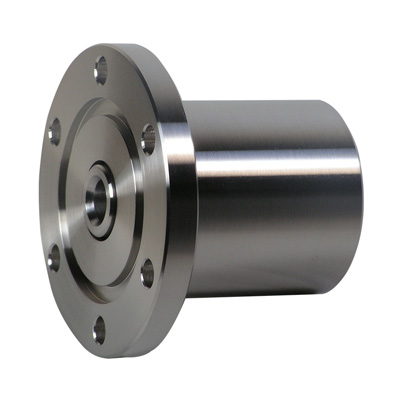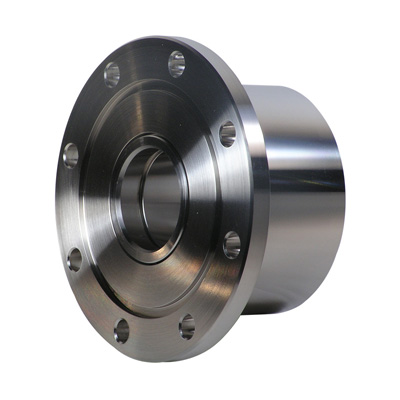Epitaxial growth system
Ideal for MOCVD equipment requiring high-speed rotation
LED (Light Emitting Diode), a new illumination light source catching people’s attention, is a semiconductor that converts electric energy into light. Due to the LED’s characteristics such as long service life, low electricity consumption, high endurance, and high luminance, they have been rapidly spreading through the adoption in various products such as large displays, LCD backlights, car headlights, lightings.
In the manufacture of LEDs, an epitaxial wafer, consisting of a thin film of GaAs, GaP, GaN, etc. grown on a substrate such as sapphire, is indispensable.
GaAs, GaP, and GaN films are formed mainly by the MOCVD (metal organic chemical vapor deposition method).
Because our magnetic seals can be used for high-speed rotation, high vacuum performance, and active gas atmosphere of chloride, metal organic gases, etc., they are ideal for various epitaxial growth systems.
Please see here for the explanation of epitaxial growth.

Magnetic seals suitable for epitaxial growth systems
A hollow shaft type magnetic seal enables the rotary shaft to install high-frequency coil electrodes, etc. inside.
You can select from the standard F1T-B series with the standard structure and the cantilever F1T-C series with no bearing arranged in the vacuum side.
Also, we will actively respond to your special specification needs, such as a gas introduction type magnetic seal to allow the rotary shaft to introduce gases of multiple lines.
Please tell us your operating conditions first. We will propose the most suitable magnetic seal for you.
What is the epitaxial growth?
It is the method for growing a single crystal thin film with a specific crystal orientation on a single crystal substrate.
The typical vapor-phase epitaxial growth methods include the MOCVD method, the MBE method and the HVPE method.
MOCVD method (Metal Organic Chemical Vapor Deposition)
Crystals are deposited with the metal organic chemical vapors in this method (which is also called “the MOVPE method”). By attaching methyl group (-CH3) to the metal constituting the LED, a liquid or solid metal organic element with high vapor pressure at normal temperature is obtained. By injecting this metal organic vapor and the hydride gas into the heated substrate and causing the thermal decomposition, semiconductor crystal films are formed.
MBE method (Molecular Beam Epitaxy)
By heating and evaporating elements in the super-high vacuum and applying a jet stream (molecular beam) of evaporative molecules with the same scattering direction onto the heated substrate, crystals are grown in this method.
HVPE method (Hydride Vapor Phase Epitaxy)
In this method, crystals are grown from chloride gases that are gaseous at high temperature. By causing reaction between the chloride gases of metallic elements of LED and the hydride gases of non-metallic elements of LED on the substrate, semiconductor crystal films are formed.


